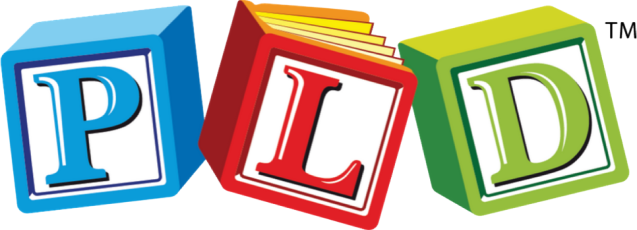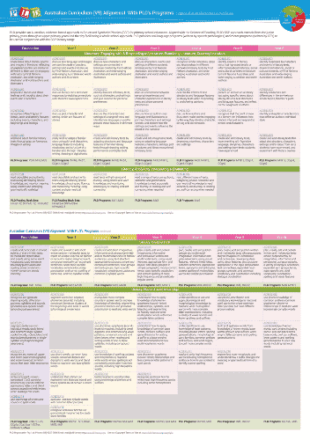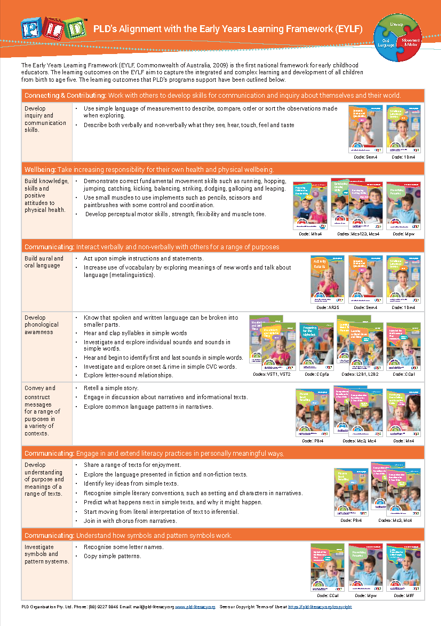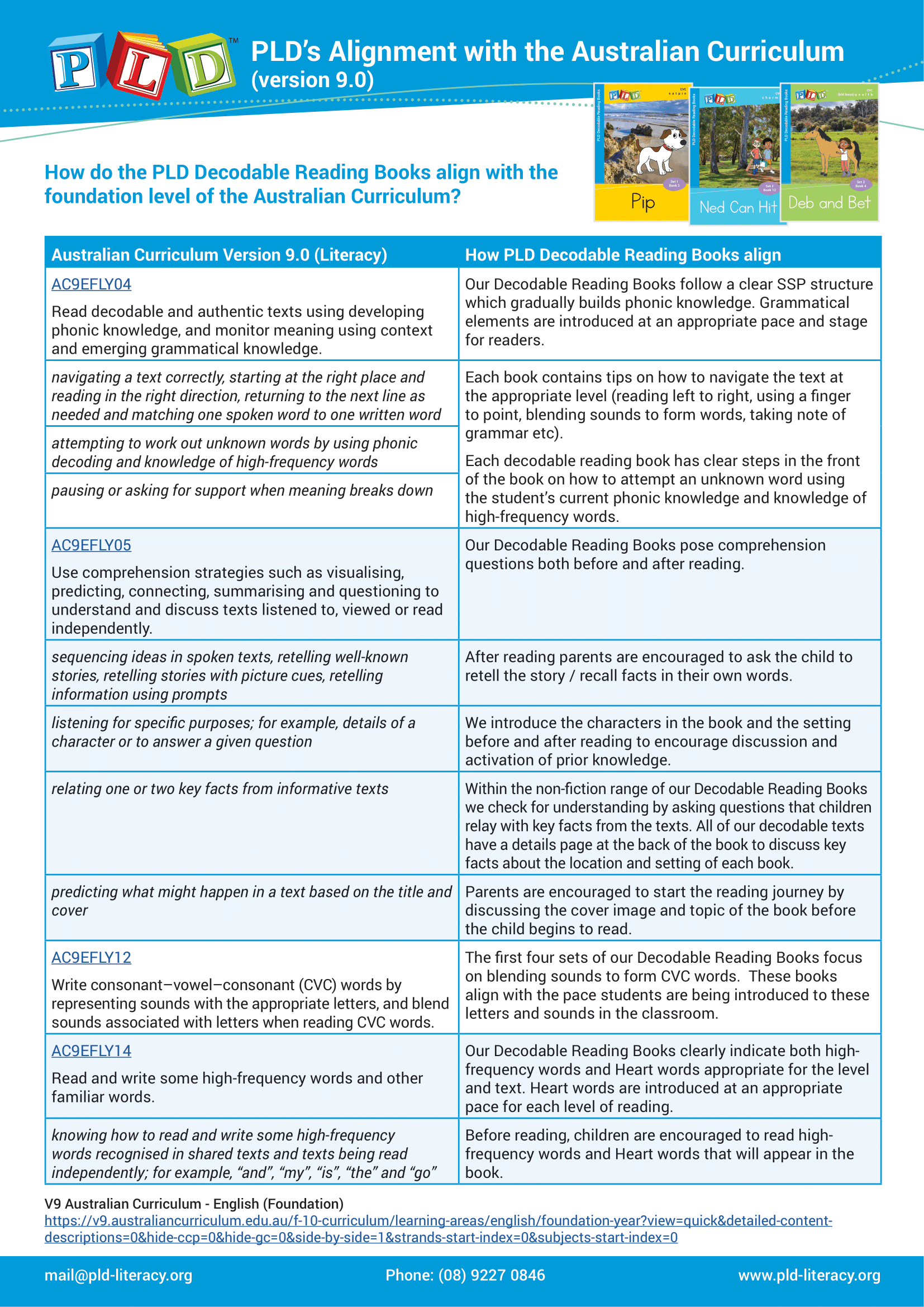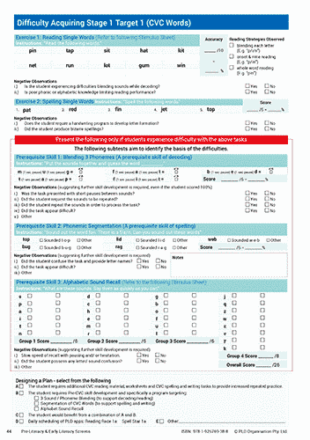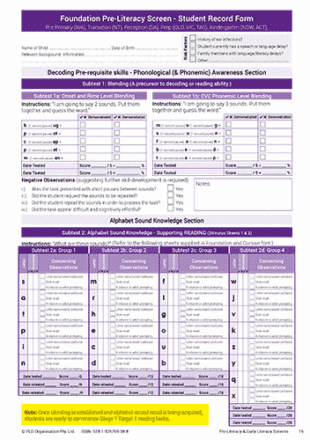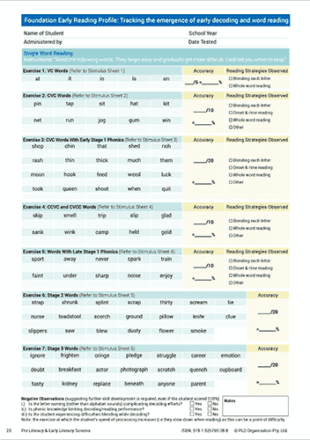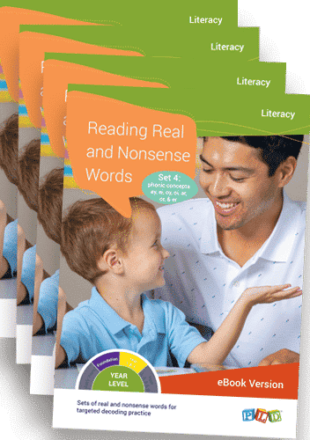-
PLD’s Alignment to the Australian National Curriculum
How does PLD align to the Australian National Curriculum?
In the attached download we have outlined where PLD applies to each year level, the content code and descriptor and the related PLD programs.
-
PLD’s Alignment with the Early Years Learning Framework
-
PLD's Decodable Reading Books Alignment with the Australian Curriculum
Reading Real and Nonsense Words – Set 3: CCVC & CVCC words (eBook)
$47.50 (inc. $4.32 GST)
eBooks are solely for use by a single individual user. e.g. An individual classroom teacher. Learn more.
This is a PDF version of Reading Real and Nonsense Words – Set 3: CCVC and CVCC words.
What are nonsense or pseudo words?
Pseudo words are nonsense words that have no meaning. These invented words are spelled in a regular or predictable way. For example, the word zop is a pseudo word and makes no sense. However, the word zop has predictable spelling and is pronounced in the same way as regular real words; the z as in zoo, the o as in orange and the p as in panda. The nonsense (or pseudo words) within this eBook are identified as being linked to funny or silly faces.
Why expose beginning readers to nonsense words?
As beginning readers have never encountered the nonsense words before, they are therefore unable to draw upon their experience (and visual memory). As nonsense words are typically presented in isolation, this means that no sentence context can be drawn upon. To read invented words beginning readers must draw upon their knowledge of how letters (and letter clusters) represent speech sounds. The advantage of presenting pseudo words is that they provide teachers with a means of determining if beginning readers can apply the phonic rules to real genuine words.
Research on nonsense words:
Decoding is established in the literature as a strong predictor of future success in reading. Nonsense words are an ideal way to determine how well the early stages of phonics instruction have been taught and also learned. For the above reasons, pseudo word reading is widely used in research as a measurement of decoding.
Set 3: CCVC & CVCC words features:
- Decoding is a strong predictor of future reading ability.
- Multiple lists of real and nonsense words.
- Fun and engaging task word sets to develop decoding skills.
- Word lists presented focus upon CCVC (or consonant consonant vowel consonant) words and CVCC (or consonant vowel consonant consonant) words.
Other eBooks in this series:
- Reading Real and Nonsense Words - Set 1: CVC Words
- Reading Real and Nonsense Words - Set 2: sh, ch, th, oo, ee Words
- Reading Real and Nonsense Words - Set 3: CCVC & CVCC Words
- Reading Real and Nonsense Words - Set 4: ar, or, er, ay, ai, oi, oy, ing, al(l) Words
- Reading Real and Nonsense Words – Set 1 - 4 (eBook Bundle)
eBooks are solely for use by a single individual user. e.g. An individual classroom teacher. Australian Copyright laws prohibit illegal distribution, storage or sharing of this eBook. Usage is tracked and breaches may result in prosecution. Learn more.
If you would like to provide multiple users with access to this resource we suggest selecting the 'Whole School Access' tab at the top of the screen to purchase a School Licence. Learn more.
eBooks: PLD’s eBooks may only be used by the Authorised Purchaser, and the Authorised Purchaser’s students, and only in conjunction with classes taken by the Authorised Purchaser. The Authorised Purchaser is defined as the original purchaser of the PLD eBook. Under the ‘Statutory Educational Licence’ the authorised purchaser can:
- View the eBook as a whole or in part
- Copy the eBook to their personal drive or locally on their device
- Display the eBook on your Interactive Whiteboard, projector or smart TV, for the purpose of teaching the students in their own classroom
- Photocopy or print up to 10% of the eBook per year, for use with the students in their classroom(s).
For copyright purposes, every page of the PLD eBooks will be stamped with the name & email address provided by the purchaser at the time of order. PLD ebooks belong solely to the purchaser and may not be shared with colleagues, parents or anyone else. PLD eBooks must not be uploaded to school servers, intranets or online platforms. Schools wishing to licence PLD eBooks can contact us HERE.
School Licences: A School Licence is a multi-user subscription to a PLD resource, such as a book or program, in a digital and printable format that is accessible via the ‘My Subscription’ section of the PLD website. A School Licence is valid for 12 months from the date of purchase and can be used by an unlimited number of teachers within a school. When bought under a School Licence:
- Resources are accessible in digital, flipbook format, which teachers can access from anywhere, at any time, on any device via the PLD website.
- The resources can be used by any amount of teachers in that school.
- Multiple teachers can access the resources simultaneously.
- The resource is available to print, subject to the standard 10% per year limitation as per Australian Copyright law.
- Updated versions of resources will be automatically accessible to users with a current licence for free, ensuring all users have access to the latest versions of resources.
- Resources are stored centrally and accessed via a secure login account on the PLD website. Thus, all currently subscription resources are accessible in the one convenient place, making resources extremely easy to find. Moreso, the school licence offering eradicates the frustration of lost or misplaced resources and programs which happens often with hardback books.
Additional information can be accessed via the following links:
Books: https://support.pld-literacy.org/en-au/article/plds-printed-electronic-materials-how-can-they-be-used-can-i-share-them-with-a-friendcolleague-9lk4y/
eBooks: https://support.pld-literacy.org/en-au/article/the-pld-ebooks-how-can-they-be-used-what-is-the-copyright-policy-ptfya8/
PLD’s Copyright Policy: https://support.pld-literacy.org/en-au/article/copyright-and-terms-of-use-of-pld-literacy-15tkcer/
ISBN : 9781925057430

